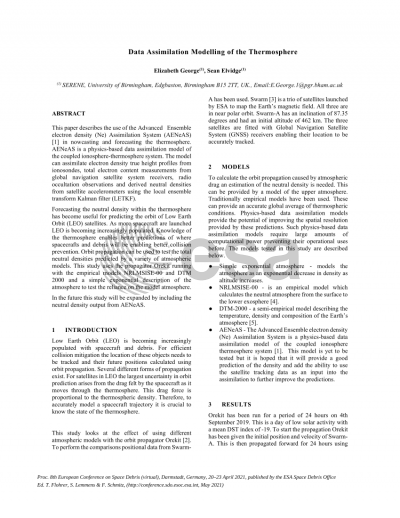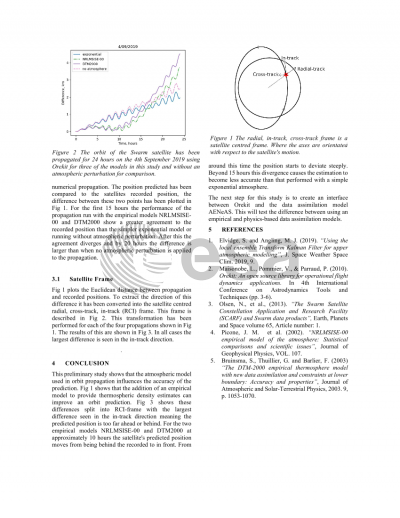Document details

Abstract
This paper describes the use of the Advanced Ensemble electron density (Ne) Assimilation System (AENeAS) [Elvidge and Angling, 2019] in nowcasting and forecasting the thermosphere. AENeAS is a physics-based data assimilation model of the coupled ionosphere-thermosphere system. The model can assimilate electron density true height profiles from ionosondes, TEC measurements from global navigation satellite system receivers, radio occultation observations and derived neutral densities from satellite accelerometers using the local ensemble transform Kalman filter (LETKF).
In this study AENeAS has been used only assimilating ionospheric observations. Since the AENeAS state vector contains thermospheric densities (and ion/neutral winds and temperatures) these terms are self-consistently updated during the assimilation process, even when only using electron density observations. The paper demonstrates that the error in specifying total neutral density for AENeAS, compared with TIE-GCM and NRLMSISE-00, when using CHAMP data as independent truth has been reduced.
Furthermore this study then shows how these reduced error neutral density observations can be used with orbit propagators to better forecast a satellites position and velocity vector.
The key to the success of accurately modelling the thermosphere, without thermospheric observations, is the estimated background model covariance matrix. This is derived from the spread of the model ensemble members and errors in this can result in poor updates of non-electron density parameters. For example, AENeAS seems to show poor estimation of the electron density to neutral wind covariance. To overcome this, and rapid changes in observations which can upset the intrinsic balance of the model, leading to discontinuities and high-frequency oscillations, a “sporadic forcing” technique (similar to ‘nudging’ and ‘incremental analysis updating’) has been developed and is described.
Preview




